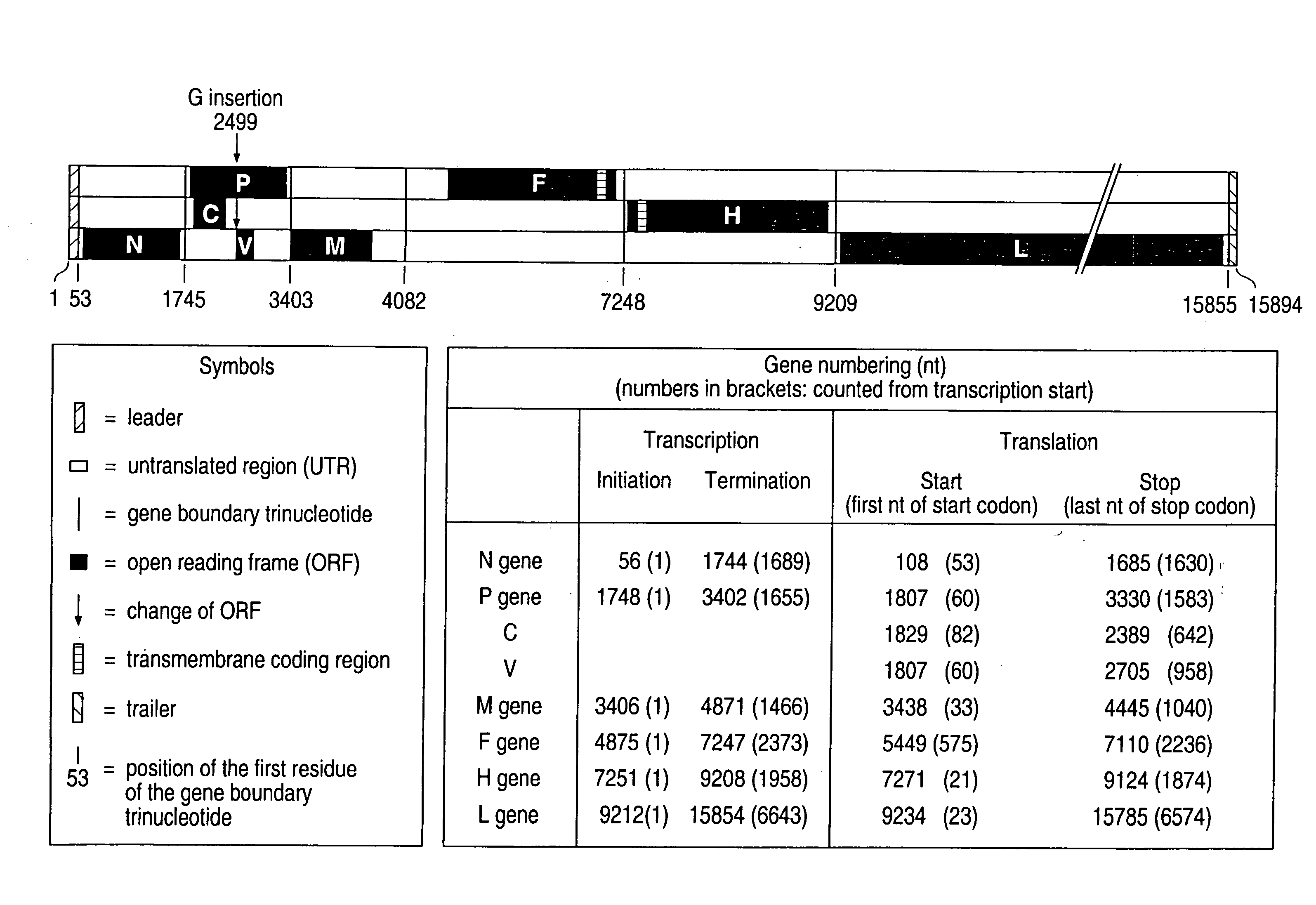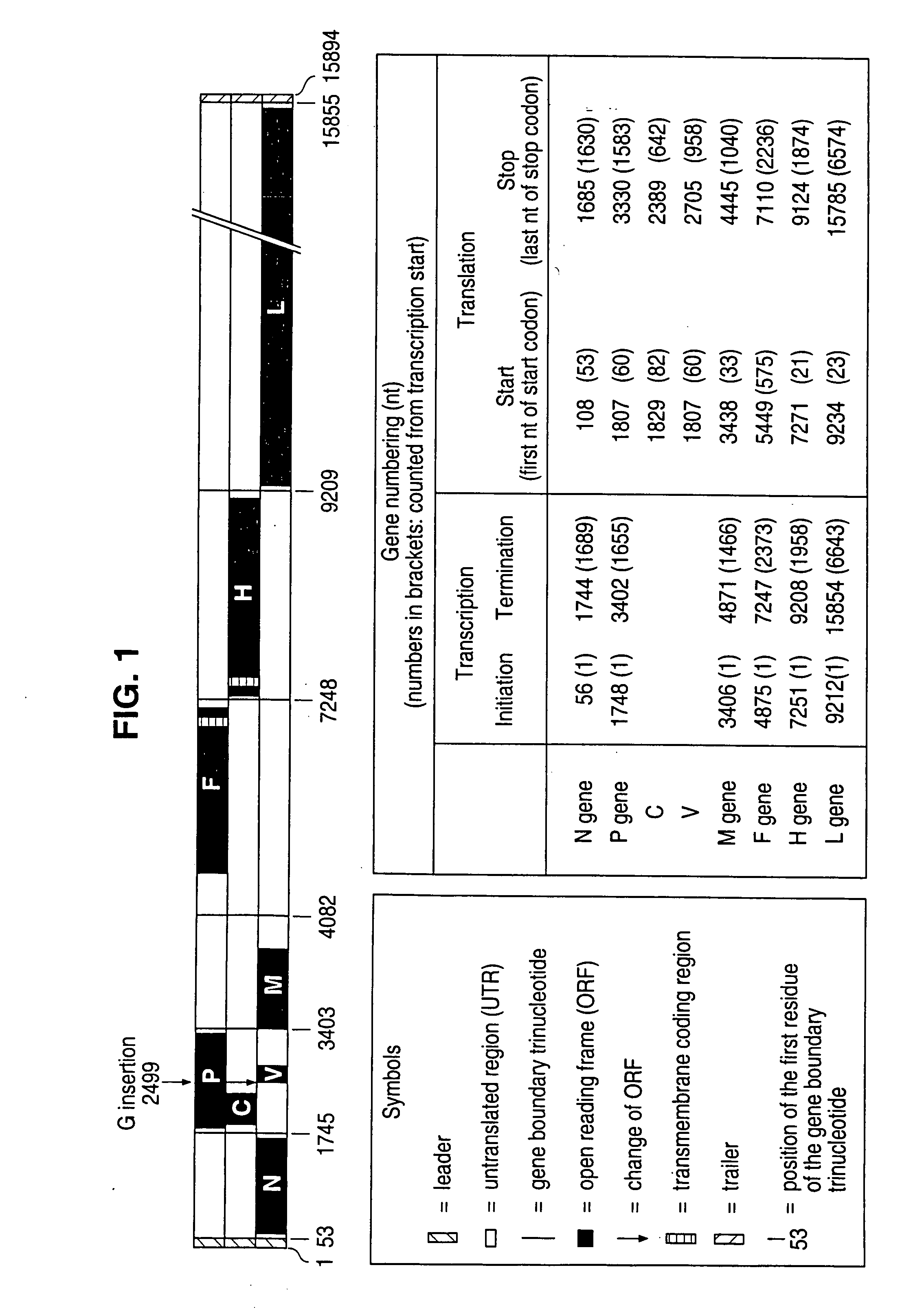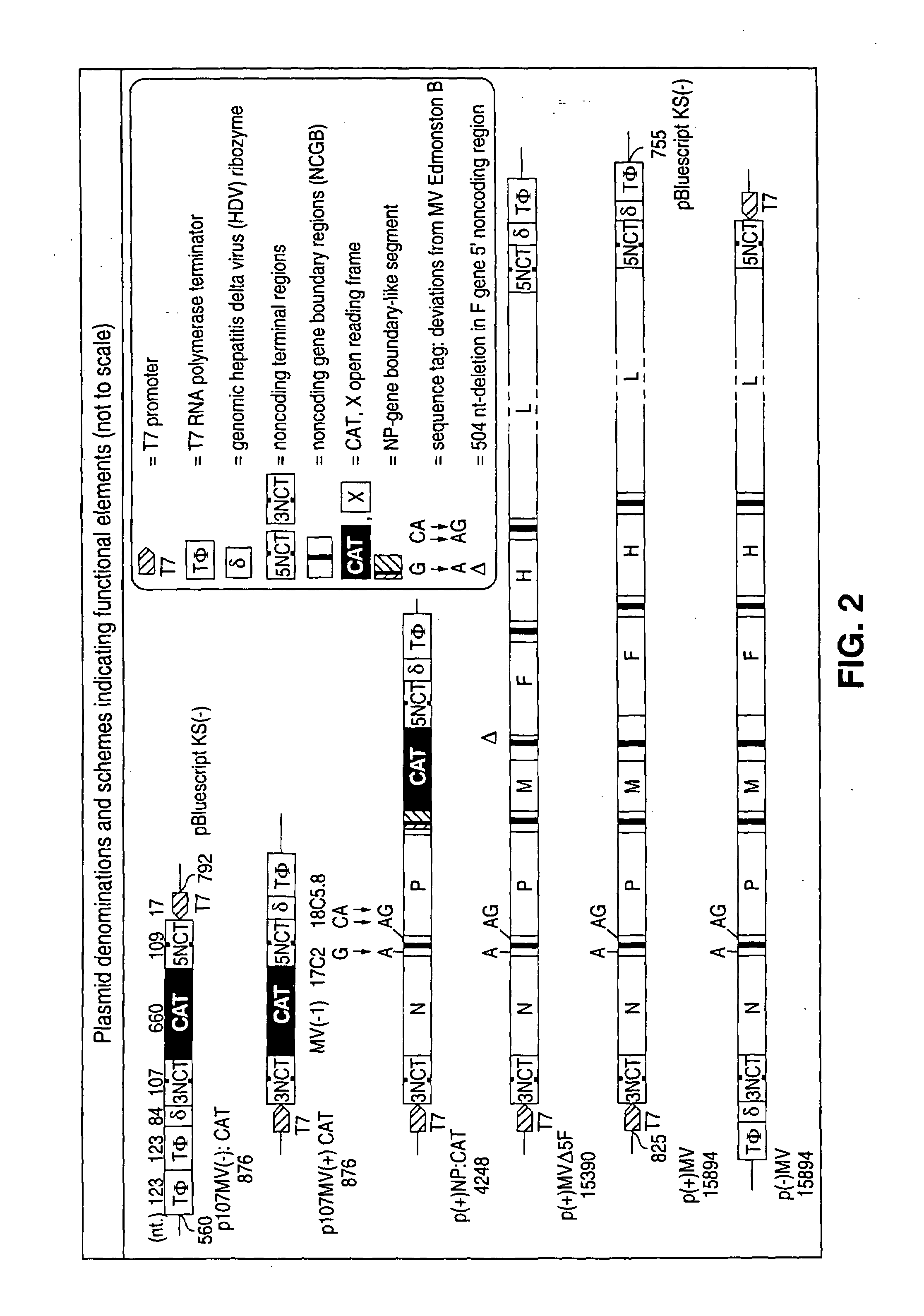cDNA Corresponding to the antigenome of nonsegmented negative stranded RNA viruses and process for the production of such viruses
a technology of cdna and antigenome, which is applied in the field of methodology for the generation of nonsegmented negative-stranded rna viruses, can solve the problems of high death, large difficulty in obtaining infectious viruses from cdna clones of negative-stranded rna viruses, and repeated measles epidemics in industrialized countries such as the usa
- Summary
- Abstract
- Description
- Claims
- Application Information
AI Technical Summary
Benefits of technology
Problems solved by technology
Method used
Image
Examples
example 2
Generation of Cell Line 293-3-46
[0113]Before the transfection, all plasmids were linearized by digestion with SfiI and sterilized by ethanol precipitation. Cells were seeded into one 35 mm well for transfection during 13 h as described below. The transfection mix contained 5 μg of pSC6-N, 4 μg of pSC6-P, and 1 μg of pSC6-T7-NEO. Then, cells were washed once with 2 ml of phosphate buffered saline (PBS; 137 mM NaCl, 2.7 mM KCl, 8 mM Na2HPO4, 1.5 mM KH2PO4), and DMEM containing 10% FCS was added. After 2 days in culture, the cells of the 35 mm well were splitted to two 75 cm2 dishes, and selection under 1.2 mg / ml G418 was started changing the medium every second day. After ˜2 weeks, the first clones of a total of ˜100 clones were transferred to 5 mm wells. When a clone had expanded to a 21 mm- or 35 mm well, cells were seeded for screening. The expression of MV N and P proteins was analysed by Western blotting (see also below) using ˜1 / 3 to 1 / 10 of the total lysate of a confluent 21 mm...
example 3
Plasmid Constructions
[0114]All cloning procedures were basically as described in Sambrook et al. (1989). PCR amplifications were carried out using the proofreading Pfu DNA polymerase (Stratagene) and primers with a 3′ terminal phosphorothioate bond instead of a phosphodiester bond (Skerra, 1992). DNA sequences of the synthetic oligonucleotides are given in lower case for non-MV nucleotides and in upper case for the MV nucleotides; sequences of relevant restriction endonuclease recognition sites are underlined. The construction of the plasmid p107MV (−):CAT can be found in Sidhu et al., 1995. Plasmid p107MV(+):CAT is the analogue of the plasmid p107MV(−):CAT. The additional intercistronic region of p (+) NP:CAT that is similar to the NP intergenic boundary was constructed by inserting (5′-ctaGCCTACCCTCCATCATTGTTATAAAAAACTTAGGAACCAGGT CCACACAGCCGCCAGCCCATCAACgcgcgtatcgcgata-3′, SEQ ID NO. 1, MV (+) 1717-1782) and the internally complementary oligonucleotide into the SpeI site of the P...
example 4
Transfection of Plasmids and Harvest of Reporter Gene Products
[0118]Cells were seeded into a 35 mm well to reach ˜50-70% confluence when being transfected. 3-8 h before transfection, the medium was replaced with 3 ml of DMEM containing 10% FCS. G418 was omitted henceforth because of its toxic effect during transfection. All plasmids were prepared according to the QIAGEN plasmid preparation kit. The protocol for the Ca2+ phosphate coprecipitation of the DNA was adapted from Rozenblatt et al. (1979). The plasmids (2-10 μg per 35 mm well) were diluted with 300 μl of 1× transfection buffer (137 mM NaCl, 4.96 mM KCl, 0.7 mM Na2HPO4, 5.5 mM dextrose, 21 mM HEPES pH 7.03). 1 M CaCl2 solution was added to a final Ca2+-concentration of 125 mM, and the mix was incubated at 20° C. for 30-120 min. The coprecipitates were added dropwise to the culture and the transfection was carried out at 37° C. and 5% CO2 for ˜15 h. Then, the transfection medium was replaced with 3 ml of DMEM containing 10% F...
PUM
| Property | Measurement | Unit |
|---|---|---|
| length | aaaaa | aaaaa |
| pH | aaaaa | aaaaa |
| v/v | aaaaa | aaaaa |
Abstract
Description
Claims
Application Information
 Login to View More
Login to View More - R&D
- Intellectual Property
- Life Sciences
- Materials
- Tech Scout
- Unparalleled Data Quality
- Higher Quality Content
- 60% Fewer Hallucinations
Browse by: Latest US Patents, China's latest patents, Technical Efficacy Thesaurus, Application Domain, Technology Topic, Popular Technical Reports.
© 2025 PatSnap. All rights reserved.Legal|Privacy policy|Modern Slavery Act Transparency Statement|Sitemap|About US| Contact US: help@patsnap.com



